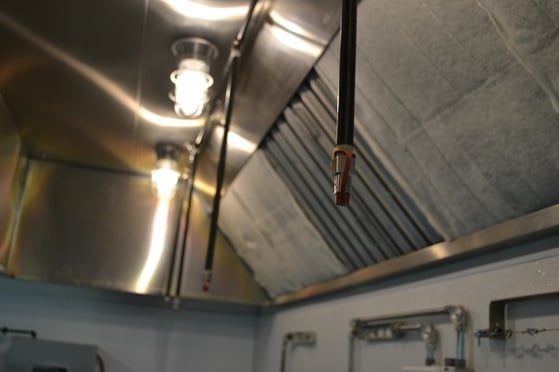
For restaurant owners, the ability to quickly detect and extinguish fires is an important part of protecting their biggest investment.
Considering the number of heat sources and the frenetic pace of most kitchens, it’s not surprising that fires can frequently spring up in commercial facilities. Having the right safety devices in place is essential to prevent those fires from spreading.
Most commercial kitchen fire suppression systems focus on two areas: the gas supply and the hood. In this article, we’ll take a look at the two most common ways hood fire suppression systems are triggered.
Fusible Links and Cable Detection
The most common type of hood suppression trigger is called a fusible link, a technology that has been used for decades. While you’ll find these systems in restaurants throughout the country, there are some important drawbacks that you should be aware of.
In a fusible link system, stainless steel cables are stretched around pulleys in the corner of the hood and attached to a detector bracket just behind the filter. Inside this bracket is a link that has been engineered to melt (or fuse) at a specific temperature, usually around 450°F.
Once the link melts sufficiently, the stainless steel cable pulls it apart, triggering the fire suppression system to perform.
While fusible links are a generally reliable fire suppression tool, there are some shortcomings in their design. For kitchen hoods that have not been properly maintained, grease and soot can accumulate on the link, making it melt more slowly, allowing the fire to spread. Because grease fires can spread quickly, even a clean link may not melt fast enough to extinguish the fire.
Finally, fusible link systems usually involve multiple mechanical actions, all of which have to be triggered properly in order to operate a tank containing a limited suppression agent, which operates for a fixed amount of time before it runs out.
Electronic Fire Detectors
As a more recent alternative to fusible link systems, electronic fire detection uses sensors powered by electricity to measure the temperature and the rate at which the temperature is changing.
This provides restaurants with a much faster response time and makes it more likely that they will be able to contain any fires from spreading.
Electronic fire detectors run off a separate battery backup, and they can be placed in more locations, including inside exhaust ducts or inside the hood itself.
And while a fusible link system is limited by the length of the stainless steel cable, the wiring for an electronic detector can be as long as it needs to be.
Electronic fire detectors don’t rely as much on mechanical processes to trigger fire suppression. Instead of the analog trigger of a fusible link, electronic detectors simply send a signal to an endless suppression system.
Want to Learn More About Restaurant Fire Suppression?
Kitchen hood fire suppression systems are only part of your emergency preparedness plan. For all of your fire suppression needs — from installing new systems to monthly and annual inspections of your existing fire suppression equipment — contact the experts at Koorsen Fire & Security today!
Koorsen Fire & Security was founded in Indianapolis, Indiana in 1946. Today, you will find our kitchen fire protection experts servicing restaurants and commercial kitchens in Cincinnati, Cleveland, Ft. Wayne, Terre Haute, Lexington, Nashville, Huntsville, and everywhere in between. We can install, inspect, and maintain your hood suppression system, fire extinguishers, fire alarm, and fire sprinkler systems.


